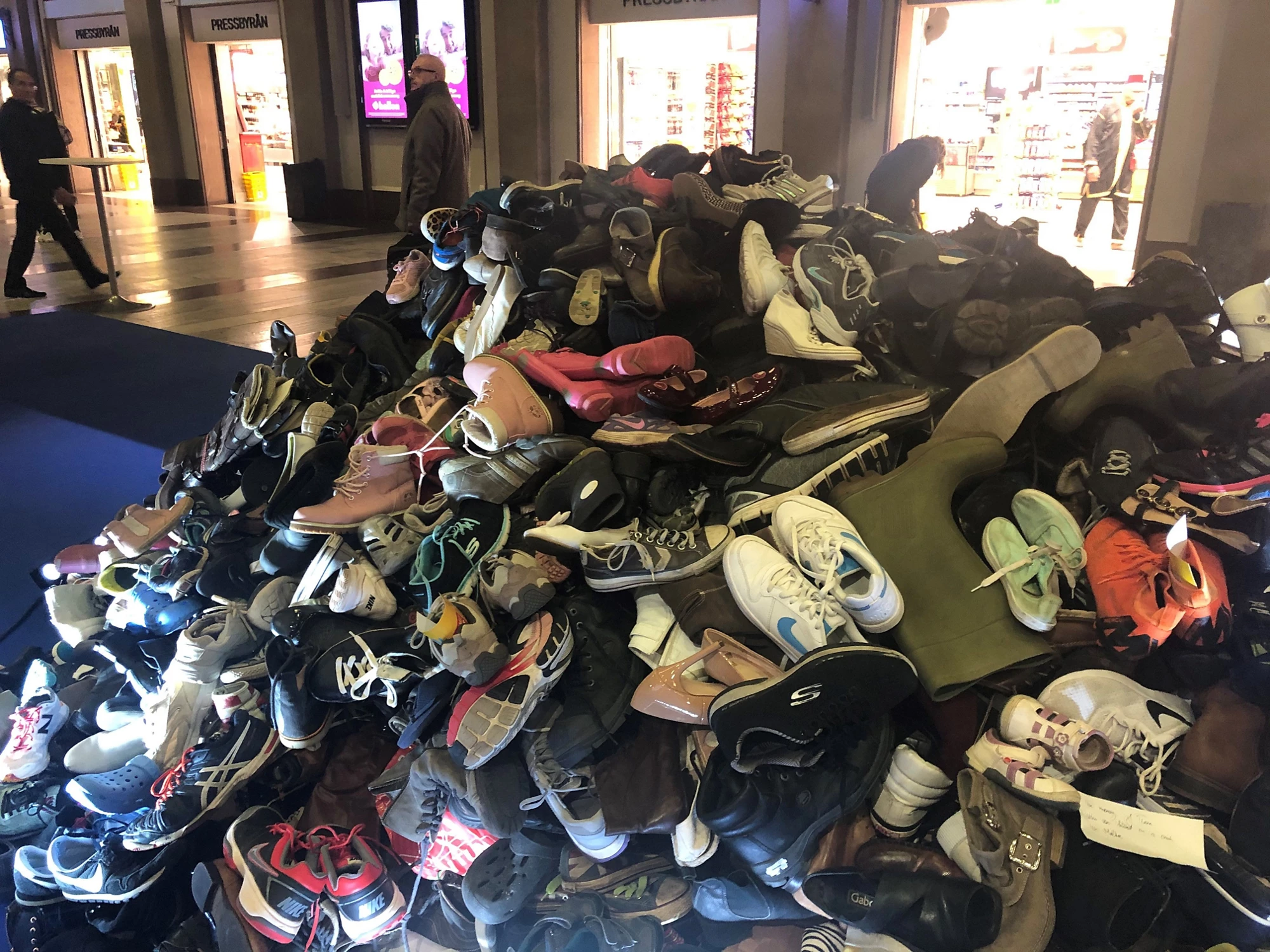 Seven-thousand four-hundred shoes, each pair representing one of the road crash victims who die every day. Photo: World Bank
Seven-thousand four-hundred shoes, each pair representing one of the road crash victims who die every day. Photo: World Bank
Seven-thousand four-hundred. This is the impossible number of shoes piled up in Stockholm’s Central Railway station – each pair representing one of the road crash victims who die every day. The impact of this somber display is visceral – and a distressing scene-setter for the 3rd Annual Global Ministerial Conference on Road Safety.
This week, ministers and delegates from around the world will gather in Stockholm to discuss road safety initiatives, share lessons from the Global Plan for the Decade of Action for Road Safety 2011-2020 , and find ways to accelerate action. Many of these participants now respectfully stand here with me, comprehending the actual individuals who underpin the data we will cite in the coming days.
Looking at the pile, I’m reminded that thousands of these shoes represent individuals from Afghanistan, Bangladesh, Bhutan, India, Maldives, Nepal, Pakistan, or Sri Lanka. I wonder how South Asia, with just 10 percent of the world’s vehicle fleet, accounts for almost a quarter of annual road crash fatalities.
South Asia, with just 10 percent of the world’s vehicle fleet, accounts for almost a quarter of annual road crash fatalities.
My eyes settle on a small pair of tennis shoes and I am instantly reminded of all the young, smiling faces I encountered during my trips to South Asian countries. In Bangladesh in 1990, road crashes were the ninth leading cause of death among children aged 5 to 14. By 2017, it had become the fourth. I also think of the countless lives shattered by the nearly 300,000 deaths that road crashes cause in India every year.
It is not merely the number of shoes that is distressing but also their diversity. Stilettos and pumps mix with loafers, slippers, and baby shoes, illustrating the randomness of road fatalities. But while no one is immune from road injuries and fatalities, it is ultimately the poor who suffer the most. More than 90 percent of global road crash fatalities occur in low and middle-income countries and the most vulnerable road users are pedestrians, cyclists, and motorcyclists.
In Bangladesh in 1990, road crashes were the ninth leading cause of death among children aged 5 to 14. By 2017, it had become the fourth.
Tomorrow, I will join those who now stand with me. Together we will explore ways to tackle the challenges of road safety that claim the lives of 1.35 million people every year.
We will discuss how the much-needed investments over the next ten years can halve road crash fatalities in South Asia – looking to achieve in the coming decade what we failed to do in the previous one. We will look at designing safer vehicles and roads, improving emergency response systems, sharing data on road crashes, increasing regional coordination among state police and other agencies, and boosting awareness about road fatalities and proactive measures to reduce them.
But tonight, we simply come together to remember why we travelled here in the first place. Namely, to turn our discussions into action, so that the number of shoes in this pile is drastically reduced.


Join the Conversation